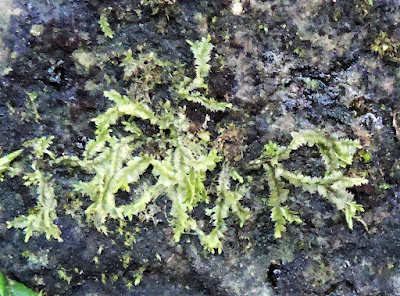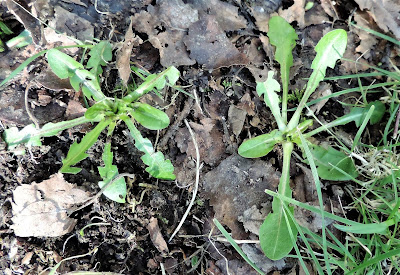On the first really pleasant day of the year (21 degrees), I sat for some time in the Green Sanctuary and, as has been the case on this date sometimes in the past, it seemed unusually quiet. There were however brimstone butterflies and bee flies enjoying the sunshine. I keep thinking the garass is not growing as vigorously as it should and there are large areas of 'meadow' in the garden and M3 that are covered in moss, although bulbous plants such as daffodils, bluebells and colchicums seem to be growing more strongly than usual. I haven't seen an worm casts in M3 whereas 16 years ago they were a fairly obvious feature.
Under the medlar tree I have discovered a bluebell. Quite a large size so it must have been there for a year or two and an interesting addition to the plant list as it is associated with ancient woodland.
The small sallow bees, Andrena praecox, are about again. They only sit very briefly on the birch trunk, but I caught the one below on a Tenby daffodil just behind the place I sit to study M3.

















